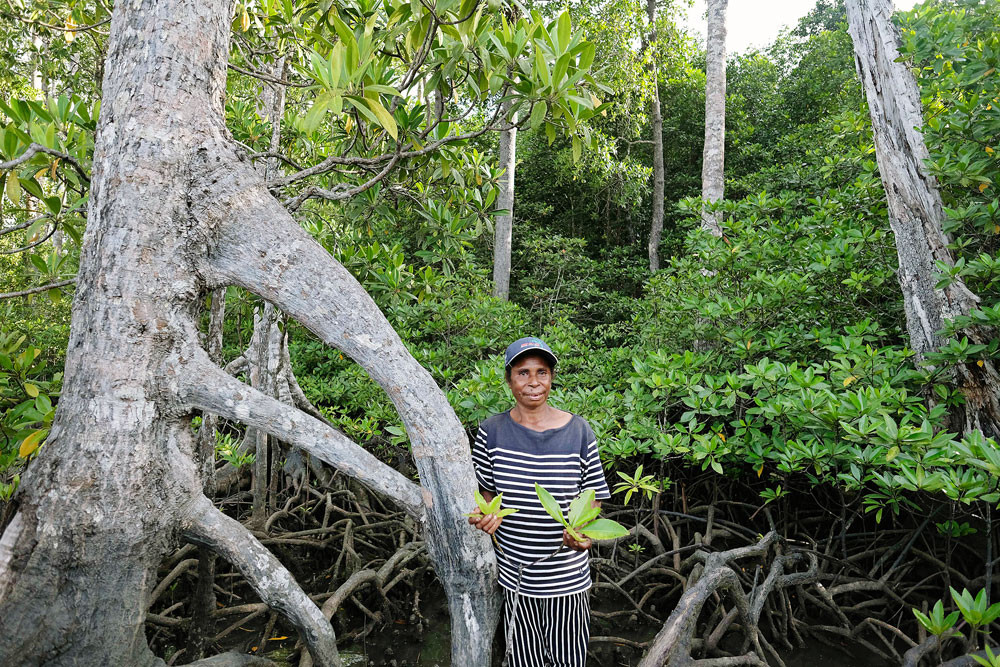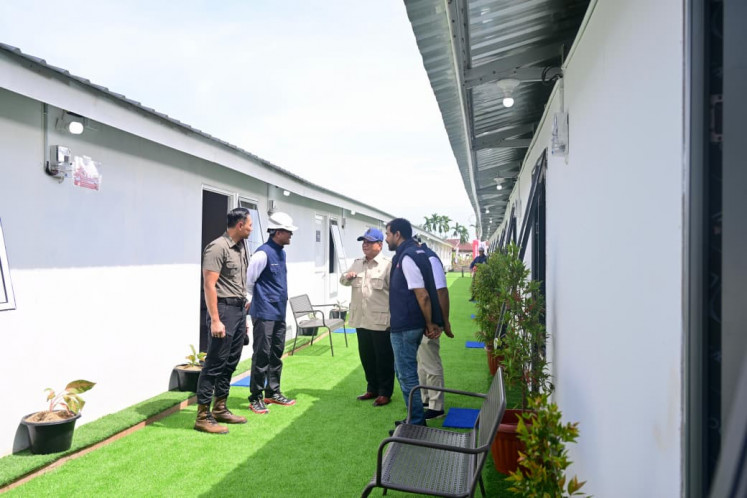Popular Reads
Top Results
Can't find what you're looking for?
View all search resultsPopular Reads
Top Results
Can't find what you're looking for?
View all search results5-step plan to protect our forests
The Low Carbon Development Initiative (LCDI) sets out five paths by which the forests of Indonesia might be protected and restored over time.
Change text size
Gift Premium Articles
to Anyone
T
he most recent global survey of tree cover, released by Global Forest Watch, revealed a worrying panorama: the world lost 3.6 million hectares of old-growth rainforest in 2018, an area the size of Belgium. But one country stood out as a success story: Indonesia reported a notable reduction in forest loss for the second year in a row.
While absolute forest loss remains high (340,000 ha in 2018), the direction of travel appears unmistakable. Indonesia’s success is in part due to the robust measures President Joko “Jokowi” Widodo’s government has put in place, including temporary bans on further expansion of oil palm plantations into forests and peatlands.
Indonesia has some of the world’s most intact and diverse tropical rainforests, many of global significance. These forests provide a sustainable livelihood and cultural identity to the indigenous peoples of the region. Indonesia’s forests and peatlands also store enormous quantities of carbon, making them critical to the world’s efforts to combat climate change.
The government of Indonesia’s Low Carbon Development Initiative (LCDI) — led by National Development Planning Minister Bambang Brodjonegoro — recently found that the country could reduce its greenhouse gas emissions 43 percent by 2030, while still growing its gross domestic product (GDP) 6 percent per year until 2045.
Indonesia cannot reach this low-carbon future without a commitment to its forests: Forest loss and land use change account for as much as 55 percent of the country’s greenhouse gas emissions. To achieve the ambitious scenario laid out by the LCDI, Indonesia needs to restore 1 million ha of degraded land to forest every year until 2024.
The LCDI sets out five paths by which the forests of Indonesia might be protected and restored over time:
First, the Indonesian government can permanently extend its moratoriums, or bans, on oil palm and other agricultural expansion into areas of primary forest and peatland. These moratoriums are an essential and proven first step to ensuring the LCDI’s emissions-reduction goals are met. Between 2016 and 2017, primary forest loss in protected peatlands went down by 88 percent, to the lowest level ever recorded.
Second, the LCDI references Indonesia’s ongoing One Map effort, which reconciles competing claims and demands on the land and sea between communities and mining, agriculture, fisheries and forestry concessions. The successful conclusion of the One Map policy could help meet the LCDI’s ambitious forest restoration targets by resolving disputes with communities and identifying areas most apt for restoration.
Third, finance needs to flow to the provinces and districts where forests most need to be protected and restored. In part, this could be achieved through an “ecological fiscal transfer” scheme, such as one pioneered in India. There, the national government rewards states with high forest cover for maintaining their forests.
Dozens of forest-rich districts in Indonesia called on the government last year to establish a similar mechanism. Redirected or repurposed agricultural subsidies could also play a role here, by being more explicitly tied to public goods outcomes such as areas of forest protected or under restoration.
Fourth, Indonesian agricultural value chains can be made more productive and equitable by improving infrastructure and farmers’ access to markets. This can lead to better incomes for smallholder farmers and reduce food loss and waste. More productive and well-trained farmers are also more likely to pursue more sustainable and resilient farming practices, thereby positioning Indonesia as a supplier of sustainable commodities, legal timber and emissions reductions.
Fifth, and finally, these efforts need to be undertaken within a broader national effort to provide a healthier, more diverse diet to Indonesia’s people, capable of addressing high rates of malnutrition and obesity. About 37 percent of Indonesian children under the age of 5 are stunted. Forests’ role in delivering sustainable and nutritious food production is vital and often overlooked. Intact forests help ensure rainfall in agricultural landscapes, while agroforestry systems provide nutritious foods such as beans and pineapples for human consumption.
Indonesia has an excellent opportunity to build on its considerable progress in reducing deforestation, restoring degraded forests, and delivering a more sustainable food and land use system. The Food and Land Use Coalition, a global initiative to transform the world’s food and land use systems, already recognizes Indonesia as a pioneer country. And as a result of the LCDI, these five recommendations are expected to inform the government’s food and land use policy as part of the forthcoming national and sub-national development planning process.
With further commitment and action on these five steps, there is still a bright future for Indonesia’s forests — and for all Indonesia’s people who depend on them.
***
Sonny Mumbunan is senior economist at World Resources Institute Indonesia and Edward Davey is director of the Geographic Deep Dives of The Food and Land Use Coalition.










